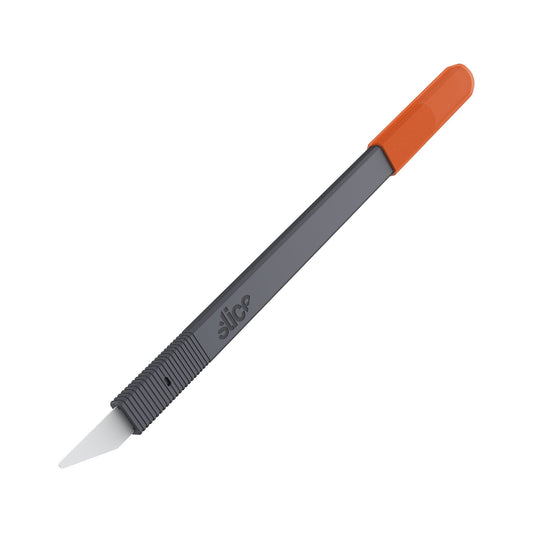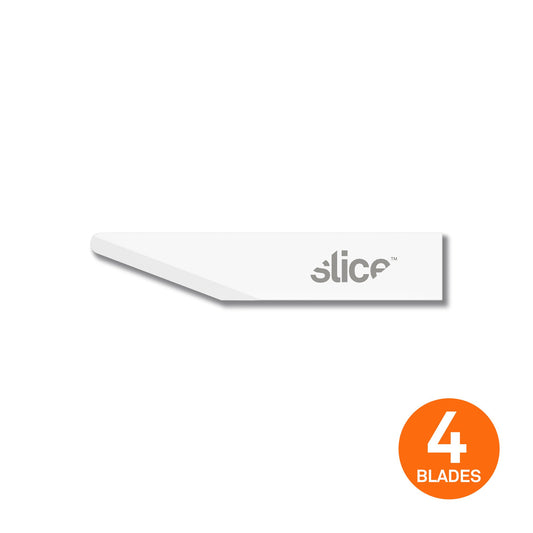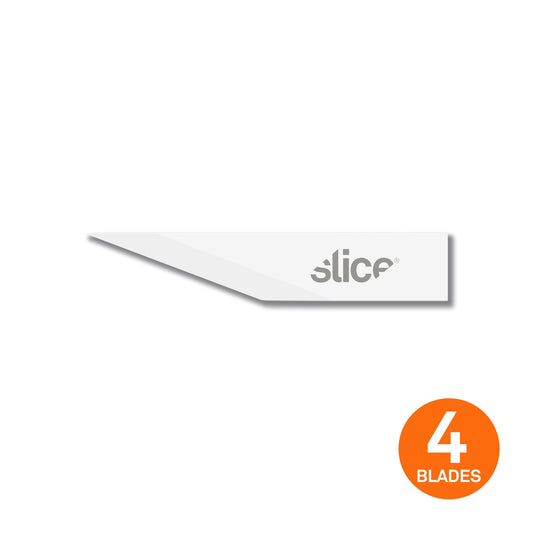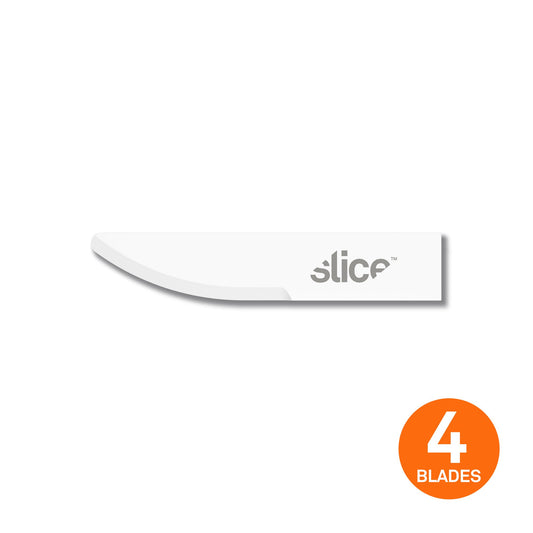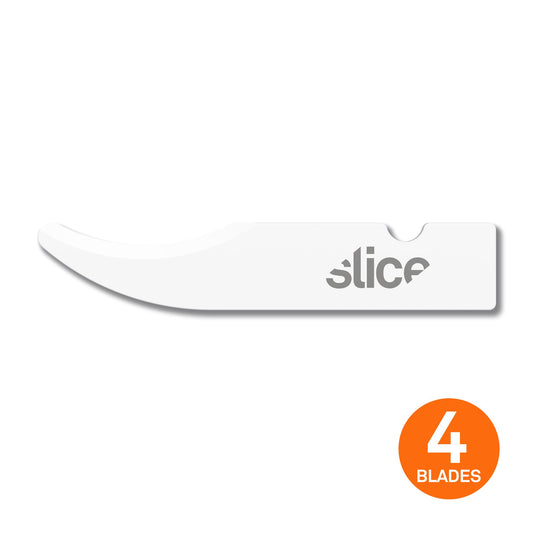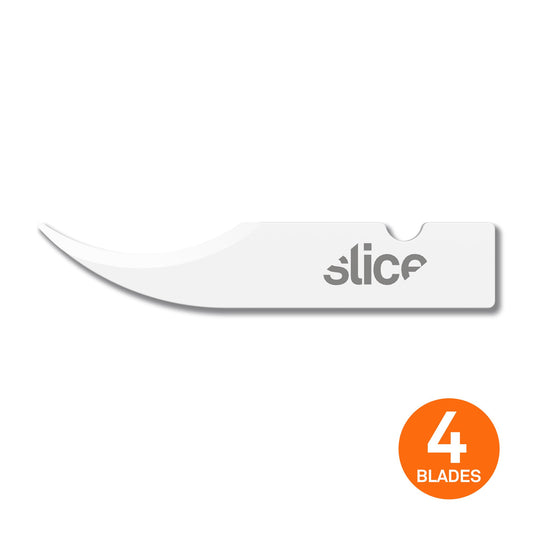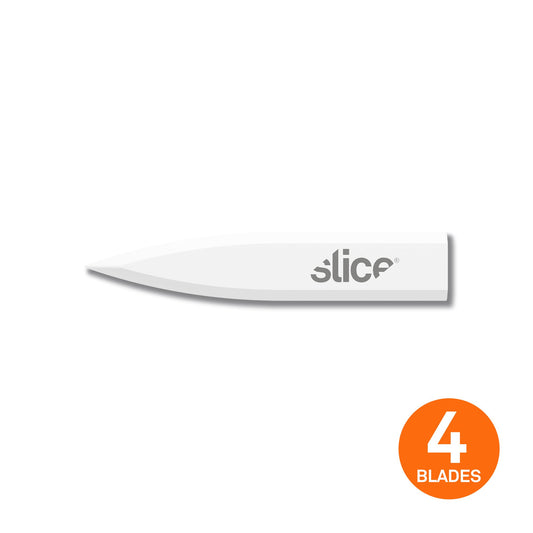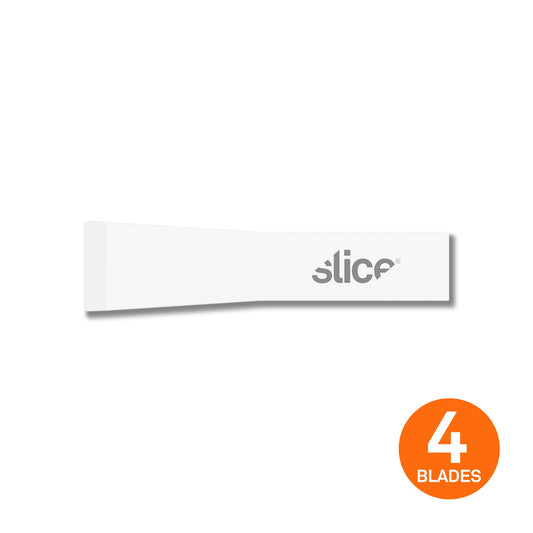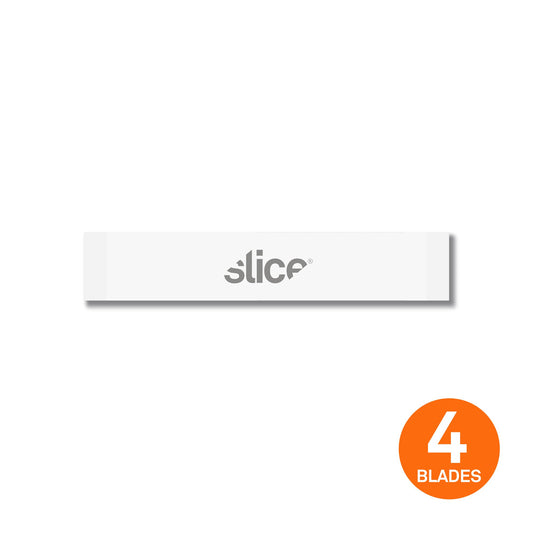Scalpel Blades: Safer Choices for Non-Surgical Use
Scalpel blades are most often associated with surgery and, in that context, extreme sharpness makes sense. But scalpel blades’ uses extend beyond the operating room.
Scalpels are excellent for their precision and maneuverability in tight spaces. This makes them useful in laboratories and manufacturing—wherever precise cutting or scraping is required—especially in areas that are narrow or tough to reach. Crafters also like scalpels for intricate detail work.

Whereas the primary aim of surgical cutting tools is to create lacerations, in non-surgical applications it’s always better if they don’t cut through skin. So, when assessing the best scalpel blades, it depends on how you’ll use them. In non-surgical settings, extreme sharpness is an unnecessary hazard.
Slice: Safety Scalpel Blades
Slice® makes the only safe non-surgical option, and offers several shapes for different applications.
Ceramics blades are not all the same. Slice ceramic scalpel blades are made of 100 percent zirconium oxide and feature our patent-pending, finger-friendly® grind: it’s safe to the touch. And, while other ceramic blades may use a hard material (although not all have Slice’s 100-percent-zirconium composition), none of them have a safer grind. They are as dangerously thin and sharp as metal blades.
Our proprietary design takes advantage of the extreme hardness of advanced ceramics. In fact, third-party tests show that Slice blades last up to 11 times longer than their steel counterparts.
Slice blades also feature these properties:
- Rust free
- Non-magnetic
- Chemically inert
- Non-sparking
- Non-conductive
- No oil coating
Slice Scalpels
Slice offers two models of scalpels: the 10568 Scalpel with replaceable blades, and the 10574 Disposable Scalpel. Our scalpels are used in a variety of industries and labs: aerospace, pharmaceuticals, packaging, mechanical and industrial engineering, and more.
The 10568 Scalpel is intended for longer-term use and is compatible with several different scalpel blades. No tools are required to change the blades, and because it fits all Slice craft blades, there’s no need for a scalpel blades size chart.
Slice scalpel blades and handle are autoclave friendly. The handles are made of a durable but lightweight glass-infused nylon.
Slice Safety Scalpel Blades: Sizes and Uses to Fit Your Needs
Slice makes eight scalpel blades; sizes and shapes vary to fit different needs, including the:
- 10519 Straight-Edge, Pointed-Tip Blade
- 10518 Straight-Edge, Rounded-Tip Blade
- 10520 Curved-Edge, Rounded-Tip Blade
- 10536 Rounded-Tip Seam Ripper Blade
- 10537 Pointed-Tip Seam Ripper Blade
- 10532 Corner-Stripping Blade
- 10534 Chisel Blade
- 10535 Narrow, Double-Sided Chisel Blade
All of these blades also fit the Slice 10548 Craft Knife (with removable safety cap), 10589 Craft Knife (with integrated Never-Lost™ safety cap), and the Precision Knife.
The most commonly used craft and scalpel blades in the Slice lineup are the 10519 Straight-Edge, Pointed-Tip Blades and 10518 Straight-Edge, Rounded-Tip Blades. These general-use models are particularly well suited for precise cutting, especially straight lines and wide curves. The pointed tip is useful to initiate a cut in some materials, and the rounded tip provides added safety.
The Slice Curved-Edge Blade is the choice for extra maneuverability and rounded edges.
Both seam ripper blades feature a curved shape that’s made to perform a hooking and cutting motion. This blade shape allows the tip to be wedged under materials, such as the thread in tight stitches. The type of tip you choose will depend of the level of safety required and how you’ll use the blade.
The curved sides and pointed tip of the Corner-Stripping Blade are useful for trimming and stripping in wedge-shaped spaces. This blade design also allows you to puncture your material and cut in either direction.
The chisel scalpel blades’ sizes and shapes differ by width. Either makes a good choice for scraping tasks. The narrower profile of the 10535 blades fits smaller spaces. And the 10535 blades are double-sided: when the first side wears out, flip the blade around and use the second side. Both the corner-stripping and chisel blades require the user to grip the handle horizontally instead of vertically. The tool retains its utility in tight or awkward spaces.
Slice Scalpel Blades: Safe, Durable, Multi-Use Options
Many non-surgical environments require workers to use a scalpel, and blades are a necessary part of that tool. But most scalpel blades put users at risk of debilitating lacerations. Workplace injuries can have far-reaching and expensive consequences.
What cutting task will you make safer with Slice scalpel blades?
Further Reading:
-
Craft Blades (Straight Edge, Rounded Tip)
Regular price $25.49 USDRegular priceUnit price per -
Craft Blades (Straight Edge, Pointed Tip)
Regular price $25.49 USDRegular priceUnit price per -
Craft Blades (Curved Edge, Rounded Tip)
Regular price $25.49 USDRegular priceUnit price per -
Seam Ripper Blades (Rounded Tip)
Regular price $25.49 USDRegular priceUnit price per -
Seam Ripper Blades (Pointed Tip)
Regular price $25.49 USDRegular priceUnit price per -
Corner-Stripping Blades
Regular price $25.49 USDRegular priceUnit price per -
Chisel Blades
Regular price $25.49 USDRegular priceUnit price per -
Chisel Blades (Narrow, Double-Sided)
Regular price $25.49 USDRegular priceUnit price per

